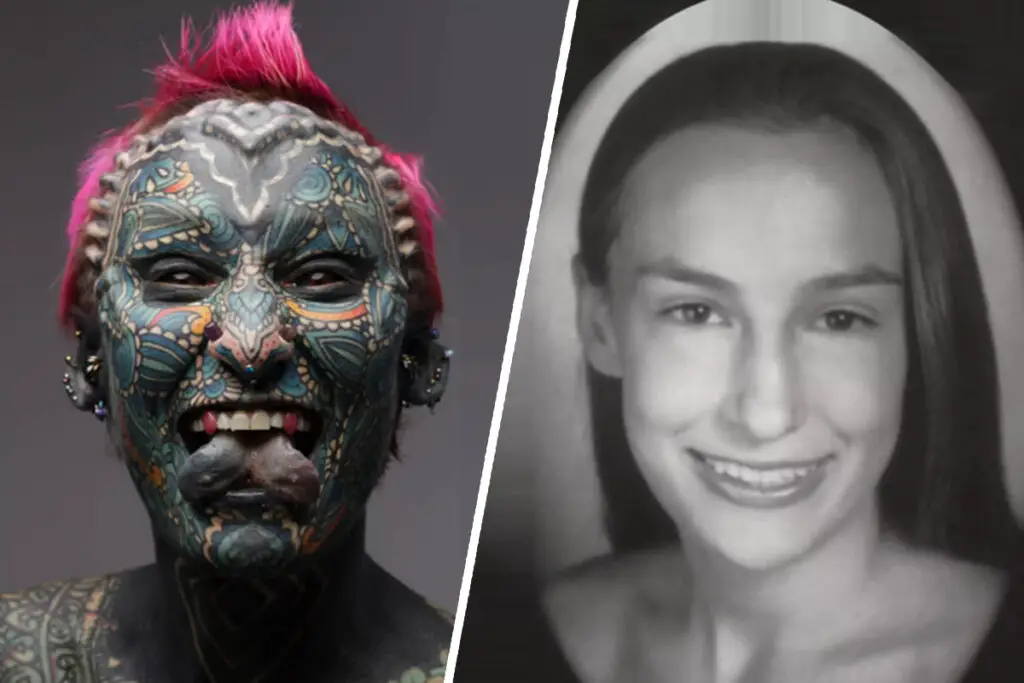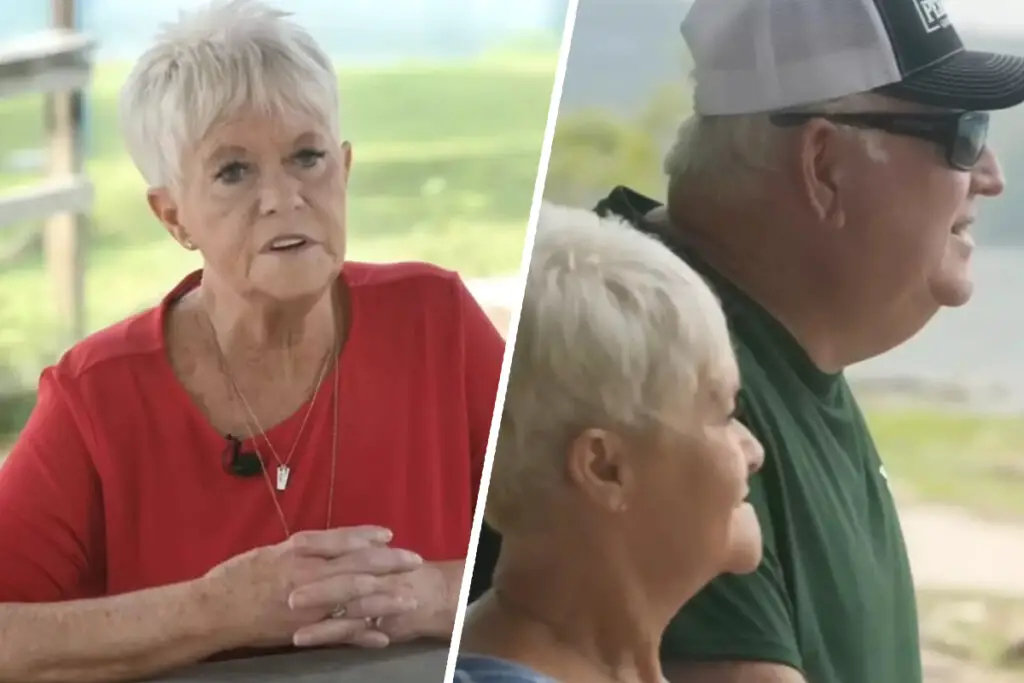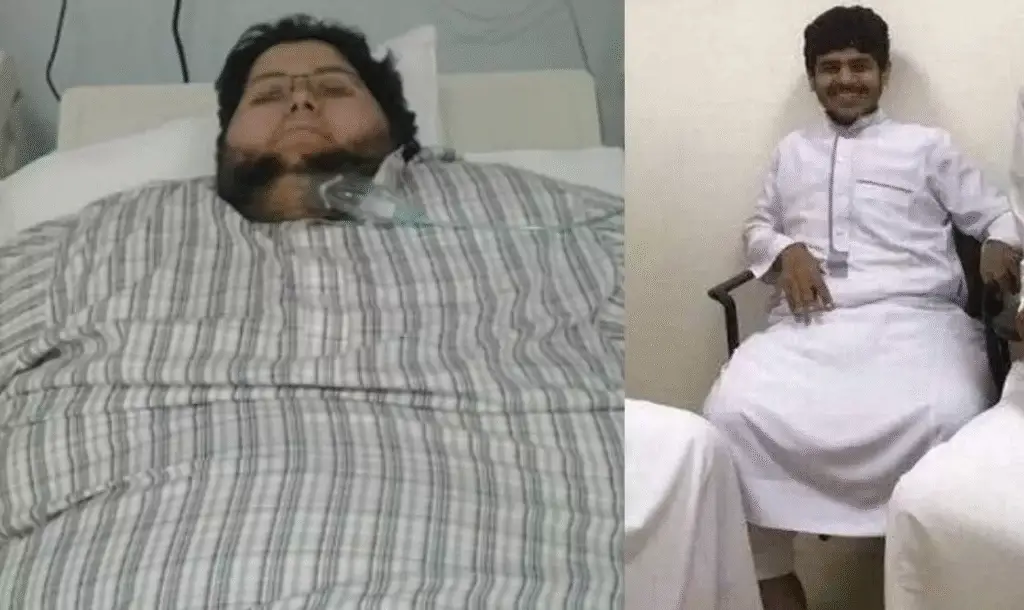From 1350 to 140 Pounds: How the Former World’s Heaviest Man Khalid Shaari Lost 1210 Pounds

Khalid bin Mohsen Shaari’s story is a remarkable tale of human resilience and medical achievement, capturing global attention for its scale and impact.
Born on February 28, 1991, in Saudi Arabia, Khalid’s life took a dramatic turn by 2013 when, at age 22, he was declared the “fattest man alive,” weighing an astonishing 1350 pounds (610 kilograms) with a BMI of 204.
This extreme obesity left him bedridden for over three years, completely dependent on family and friends for basic needs like eating and bathing.
His condition was not just a personal struggle but a public health case study, highlighting the challenges of morbid obesity.
The narrative of Khalid’s transformation began in August 2013, when his dire situation caught the attention of Saudi Arabia’s then-King Abdullah.
Moved by compassion, the king ordered Khalid’s transfer to King Fahd Medical City in Riyadh for comprehensive medical treatment, funded entirely by the state.
This intervention was not merely logistical but symbolic, offering hope where there seemed to be none.
By 2023, Khalid had lost 1210 pounds (542 kilograms), stabilizing at 140 pounds (63.5 kilograms), a journey that has inspired millions and sparked discussions on healthcare equity and obesity treatment.
The Royal Intervention: A Turning Point
The decision to intervene was pivotal. King Abdullah’s order in August 2013 was not just a medical directive but an act of humanitarian leadership.
Transporting Khalid, given his immense size, required extraordinary measures.
A team of 30 medical professionals, equipped with a forklift and a specially designed bed, facilitated his move from Jizan to Riyadh, as detailed in Wikipedia.
This logistical challenge underscored the severity of his condition and the commitment to his care.
The king’s involvement ensured that cost was no barrier, providing Khalid with access to top-tier medical facilities at no expense, a rare privilege that highlights disparities in healthcare access globally.
Comprehensive Treatment Plan

Upon arrival at King Fahd Medical City, Khalid underwent a multifaceted treatment plan designed by experts.
This included gastric bypass surgery to reduce his stomach size, making him feel full with smaller food portions, as noted in Times of India.
A strictly controlled diet, tailored to his needs, was paired with an intensive exercise regimen, all under close medical supervision.
The initial six months were critical, with Khalid losing 700 pounds (320 kilograms)—more than half his body weight—by early 2014, according to Jagran Josh.
By November 2017, his total weight loss reached 1190 pounds (542 kilograms), bringing his weight down to 150 pounds (68 kilograms), and by 2023, it stabilized at 140 pounds (63.5 kilograms), reflecting sustained progress.
The treatment also involved intensive physiotherapy to rebuild muscle strength and improve cardiovascular health, given the strain his previous weight had placed on his heart and lungs.
This comprehensive approach was crucial, as it addressed both the physical and functional aspects of his condition, ensuring long-term sustainability.
Challenges and Additional Surgeries
However, the journey was not without challenges.
Losing such a massive amount of weight left Khalid with significant excess skin, which posed both aesthetic and health risks.
Multiple surgeries were required to remove this excess, a common procedure for individuals undergoing extreme weight loss, as highlighted in Indian Express.
These surgeries, while necessary, added to the complexity of his recovery, requiring additional recovery time and medical attention.
Despite these hurdles, Khalid’s overall health improved dramatically, with his heart and lung functions returning to near-normal levels, and his mobility significantly enhanced.
Regaining Mobility and Independence
One of the most poignant milestones was in February 2016, when Khalid took his first steps in five years, aided by a walker.
This moment, documented in various reports, was not just a physical achievement but a psychological one, symbolizing his rebirth and newfound independence.
From being bedridden and reliant on others, he could now move, care for himself, and engage in activities that were once impossible dreams.
This transformation was a testament to the effectiveness of the treatment plan and the dedication of his medical team.
Impact and Public Perception
Today, Khalid is known affectionately as “the smiling man,” a nickname given by his medical staff, reflecting his positive attitude and gratitude for his second chance at life.
His story has resonated globally, appearing in media outlets like CNBC TV18, which detailed his journey from dependency to mobility.
His before-and-after photos, widely shared, are a visual testament to the power of transformation, inspiring countless individuals struggling with obesity.
Khalid’s case is exceptional not only for the scale of weight loss but also for the resources dedicated to his care.
This raises important questions about healthcare equity, as most people do not have access to such extensive support.
His story underscores the potential of bariatric surgery and comprehensive care, as noted by Dr. Shashank Shah in Indian Express, who emphasized that “in extreme obesity, surgery guarantees the best outcome, providing proven long-term results.”
Broader Implications and Personal Reflections
Khalid’s journey prompts reflection on the broader issue of obesity in society, especially as rates continue to rise globally.
It serves as both a warning of the extremes to which obesity can lead and a testament to what’s possible with the right intervention.
From a personal perspective, his story is deeply inspiring. It shows that no matter how dire the situation, there’s always hope for change.
His resilience, coupled with the compassion of King Abdullah and the expertise of his medical team, illustrates what can be achieved when these elements converge.
Khalid himself has expressed profound gratitude, often speaking about how he never thought he’d walk again or experience the simple joys of life.
His transformation has not only improved his physical health but also his mental and emotional well-being, making him a symbol of hope and determination.
Detailed Timeline and Metrics
To provide a clearer picture, here’s a table summarizing key milestones in Khalid’s journey:
| Date | Event | Weight (pounds/kg) |
|---|---|---|
| February 1991 | Born in Saudi Arabia | – |
| 2013 | Declared heaviest man alive, bedridden | 1350/610 |
| August 2013 | King Abdullah intervenes, treatment begins | 1350/610 |
| Early 2014 | Loses 700 lb (320 kg) in six months | 640/290 |
| February 2016 | Walks with walker for first time | ~440/~200 (est.) |
| November 2017 | Total weight loss reaches 1190 lb (542 kg) | 150/68 |
| 2023 | Weight stabilizes | 140/63.5 |
This table, drawn from sources like Wikipedia and Jagran Josh, highlights the rapid progress and sustained effort required for his transformation.
































